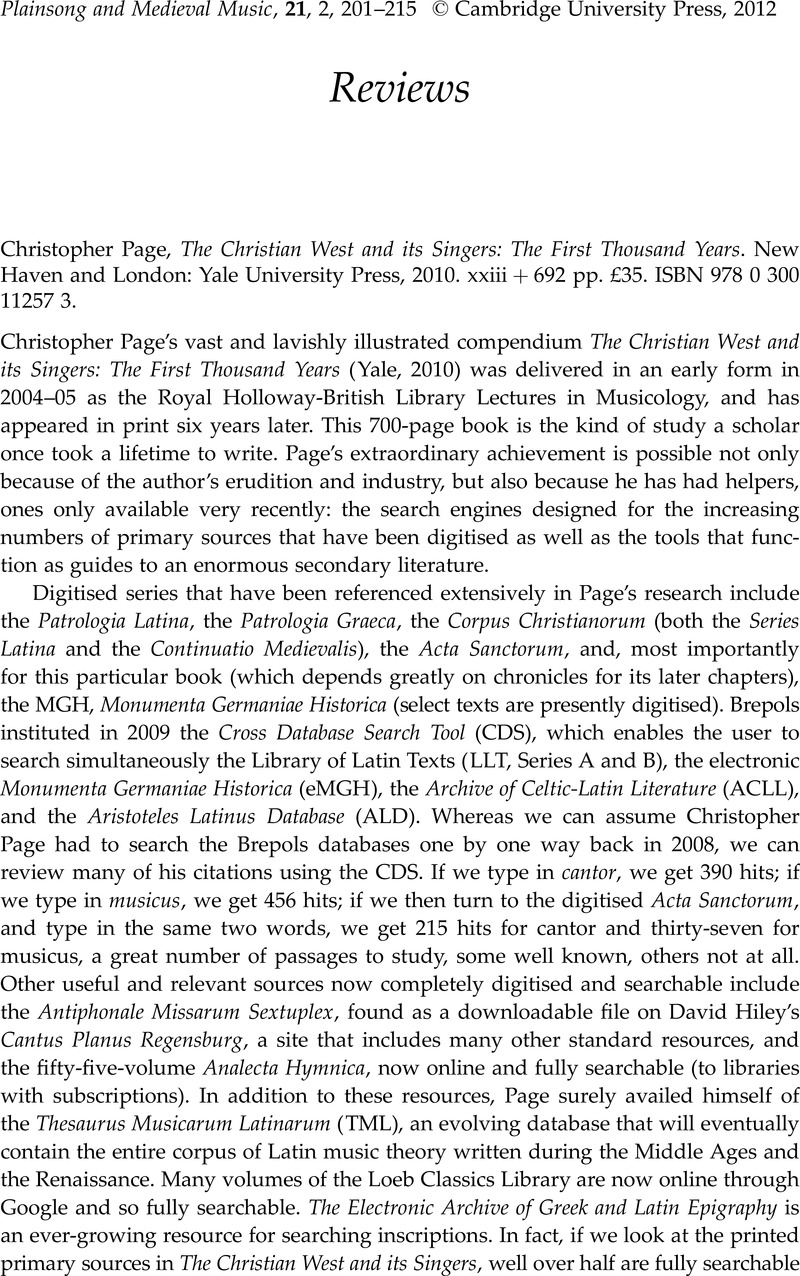No CrossRef data available.
Article contents
Christopher Page, The Christian West and its Singers: The First Thousand Years. New Haven and London: Yale University Press, 2010. xxiii+692 pp. £35. ISBN 978 0 300 11257 3.
Published online by Cambridge University Press: 13 September 2012
Abstract

- Type
- Reviews
- Information
- Copyright
- Copyright © Cambridge University Press 2012
References
1 Jeffery, Peter, ‘Monastic Reading and Roman Chant’, in Western Plainchant in the First Millennium: Studies in the Medieval Liturgy and its Music, ed. Gallagher, Sean et al. (Aldershot, 2003), 45–103, at 61Google Scholar.
2 The Uses of the Past in the Early Middle Ages, ed. Hen, Yitzhak and Innes, Matthew (Cambridge, 2000)CrossRefGoogle Scholar.
3 ‘Donation of Constantine’ and ‘Constitutum Constantini’: The Misinterpretation of a Fiction and its Original Meaning, with a contribution by Wolfram Brandes: ‘The Satraps of Constantine’ (Berlin, 2007). For a ringing endorsement of the document's Roman origins (against Fried's view that it is Frankish), see Goodson, Caroline J. and Nelson, Janet, ‘Review Article: The Roman Contexts of the Donation of Constantine’, Early Medieval Europe 18 (2010), 446–67CrossRefGoogle Scholar.
4 Goffart, Walter, ‘Paul the Deacon's Gesta Episcoporum Mettensium and the Early Design of Charlemagne's Succession’, Traditio 42 (1986), 59–93CrossRefGoogle Scholar; Kempf, Damien, ‘Paul the Deacon's Liber de episcopis Mettensibus and the Role of Metz in the Carolingian Realm’, Journal of Medieval History 30 (2004), 279–99 (at 297)CrossRefGoogle Scholar.
5 See my ‘Helgaud of Fleury and the Liturgical Arts: The Magnification of Robert the Pious’, in Magnificence and the Sublime in Medieval Aesthetics: Art, Architecture, Literature, Music, ed. Jaeger, C. Stephen (New York, 2010), pp. 102–27, with notesGoogle Scholar.
6 See, for example, Ziezulewicz, William, ‘Abbatial Elections at Saint Florent-de-Saumur (ca. 950–1118)’, Church History 57 (1988), 289–97CrossRefGoogle Scholar.




